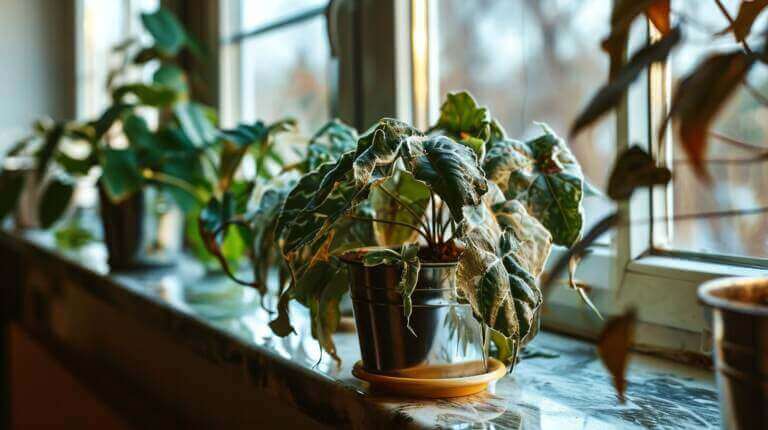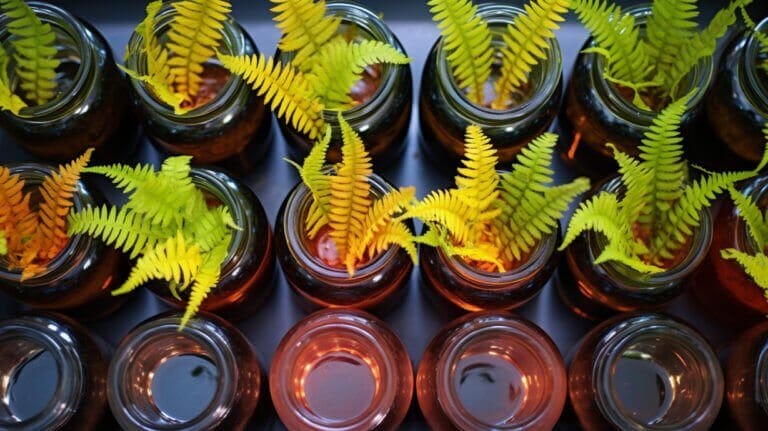Discovering the ideal amount of sunlight for a spider plant’s growth can be a perplexing pursuit. In this article, we will delve into the light requirements of these resilient and vibrant plants, aiming to provide valuable insights to both novice and experienced gardeners alike.
From understanding the optimal light conditions to troubleshooting common sunlight issues, we will guide you towards finding the perfect balance of sun and shade for your spider plants.
Key Takeaways
- Spider plants require 4-6 hours of bright, indirect sunlight each day.
- Direct sunlight can burn the leaves of spider plants.
- Spider plants should be placed near a window with filtered light.
- Different spider plant varieties have varying light requirements, with low light varieties tolerating low light conditions and high light varieties requiring bright, indirect sunlight.
Understanding the Sunlight Needs of Spider Plants
Spider plants require a specific amount of sunlight to thrive and grow successfully. Understanding their sunlight needs is crucial for adjusting light intensity and maximizing plant growth.
Spider plants are considered low-light plants, meaning they can tolerate lower light levels than some other houseplants. However, they still require some direct or indirect sunlight to perform at their best.
Ideally, spider plants should be placed in a location where they receive bright, indirect light for about 4-6 hours a day. Direct sunlight can be too intense for spider plants and may cause their leaves to burn.
It is important to strike a balance between providing enough light for photosynthesis and protecting the plants from excessive heat and light.
Now, let’s explore the ideal light conditions for spider plant growth.
Ideal Light Conditions for Spider Plant Growth
The ideal light conditions for spider plant growth involve providing a balance of bright, indirect sunlight and protection from excessive heat and light. To maximize growth, it is important to consider the following indoor lighting options:
- Bright, indirect sunlight: Spider plants thrive in bright, but not direct, sunlight. Placing them near a window with filtered light is ideal.
- Protection from excessive heat: Spider plants are sensitive to extreme temperatures. Avoid placing them near heating vents or radiators, as this can cause the leaves to dry out and wilt.
- Protection from excessive light: While spider plants need light to thrive, too much direct light can scorch their leaves. Consider using sheer curtains or placing the plant a few feet away from a bright window to provide the right amount of light.
Finding the Right Balance: Sunlight and Shade for Spider Plants
How can you strike the perfect balance between sunlight and shade for spider plants?
Finding the right amount of sunlight for your spider plant is crucial for its growth and health. Spider plants thrive in bright, indirect light, making them perfect for indoor spaces with moderate sunlight. They require about four to six hours of sunlight each day to stay healthy and vibrant.
However, direct sunlight for long durations can harm the leaves, causing them to burn or turn yellow. To ensure the optimal sunlight duration, it is recommended to place your spider plant near a north or east-facing window. This will provide sufficient light while protecting the plant from harsh afternoon sun.
By understanding the sunlight requirements and adjusting accordingly, you can ensure the health and well-being of your spider plant.
Now, let’s explore how to adjust sunlight exposure for different spider plant varieties.
Adjusting Sunlight Exposure for Different Spider Plant Varieties
To ensure optimal sunlight exposure for various spider plant varieties, it is important to consider the specific light requirements of each cultivar. Adjusting sunlight exposure for indoor spider plants can help promote healthy growth and vibrant foliage.
Here are some key points to consider when it comes to spider plant varieties and their light requirements:
Low light varieties:
- These varieties thrive in indirect or filtered sunlight.
- They can tolerate low light conditions and are ideal for indoor spaces with limited natural light.
High light varieties:
- These varieties require bright, indirect sunlight.
- They should be placed near a window or in a well-lit area, but away from direct sunlight.
Troubleshooting Sunlight Issues: Common Problems and Solutions
Sunlight issues can arise when growing spider plants, but with proper troubleshooting and solutions, these problems can be resolved effectively.
One common challenge is insufficient sunlight, which can cause the plant to become pale and weak. To address this, it is essential to optimize sunlight exposure by placing the spider plant in a location that receives bright, indirect light for at least a few hours a day. If natural light is limited, artificial grow lights can be used to supplement the sunlight.
On the other hand, excessive sunlight can lead to scorched leaves and wilting. To remedy this, the plant should be moved to a spot with filtered or indirect light.
Regularly monitoring and adjusting the plant’s exposure to sunlight will help maintain its health and vitality.
Frequently Asked Questions
Can Spider Plants Survive in Low Light Conditions?
Spider plants, known for their adaptability, can survive in low light conditions. While they prefer bright, indirect light, they can tolerate lower light levels, making them suitable for various indoor environments. However, it’s important to note that prolonged exposure to low light can hinder their growth and overall health.
To ensure optimal growth, consider providing your spider plant with at least a few hours of indirect sunlight every day. Proper care and propagation techniques are essential for maintaining a healthy spider plant.
Is It Necessary to Provide Direct Sunlight to Spider Plants?
Providing the right amount of light is crucial for the overall health and growth of spider plants. While direct sunlight is not necessary, they do require sufficient indoor lighting options.
Spider plants can thrive in indirect sunlight, which offers numerous benefits such as preventing leaf burn and reducing the risk of overheating.
Can Spider Plants Be Kept Outdoors All Year Round?
Spider plants can be kept outdoors all year round, but certain conditions must be met for their optimal growth.
Outdoor conditions should mimic indoor conditions as closely as possible, providing the plant with bright, indirect sunlight. Direct sunlight should be avoided to prevent leaf burn.
Spider plants thrive in temperatures between 55-80°F (13-27°C), so it’s important to ensure that the outdoor environment remains within this range.
Proper care and attention to outdoor conditions will ensure the health and vitality of spider plants.
What are the Light Requirements for Spider Plants as Houseplants?
Spider plants have a remarkable tolerance for direct sunlight, but excessive exposure can have detrimental effects on their health. While they thrive in bright, indirect light, prolonged periods of intense sunlight can result in leaf burn and dehydration.
It is important to strike a balance by providing them with ample light without subjecting them to harsh rays. Monitoring their response to sunlight and adjusting their placement accordingly can help ensure their optimal growth and well-being.
Can Spider Plants Be Grown Under Artificial Light Sources?
Spider plants can be grown under artificial light sources, making them suitable for indoor cultivation. This method allows for greater control over the amount and duration of light exposure, ensuring optimal growth conditions. Artificial light sources such as fluorescent or LED lights can provide the necessary spectrum of light for spider plants to thrive.
Growing spider plants indoors also offers benefits such as improved air quality and aesthetic appeal. With the right artificial lighting setup, spider plants can flourish in various indoor environments.







